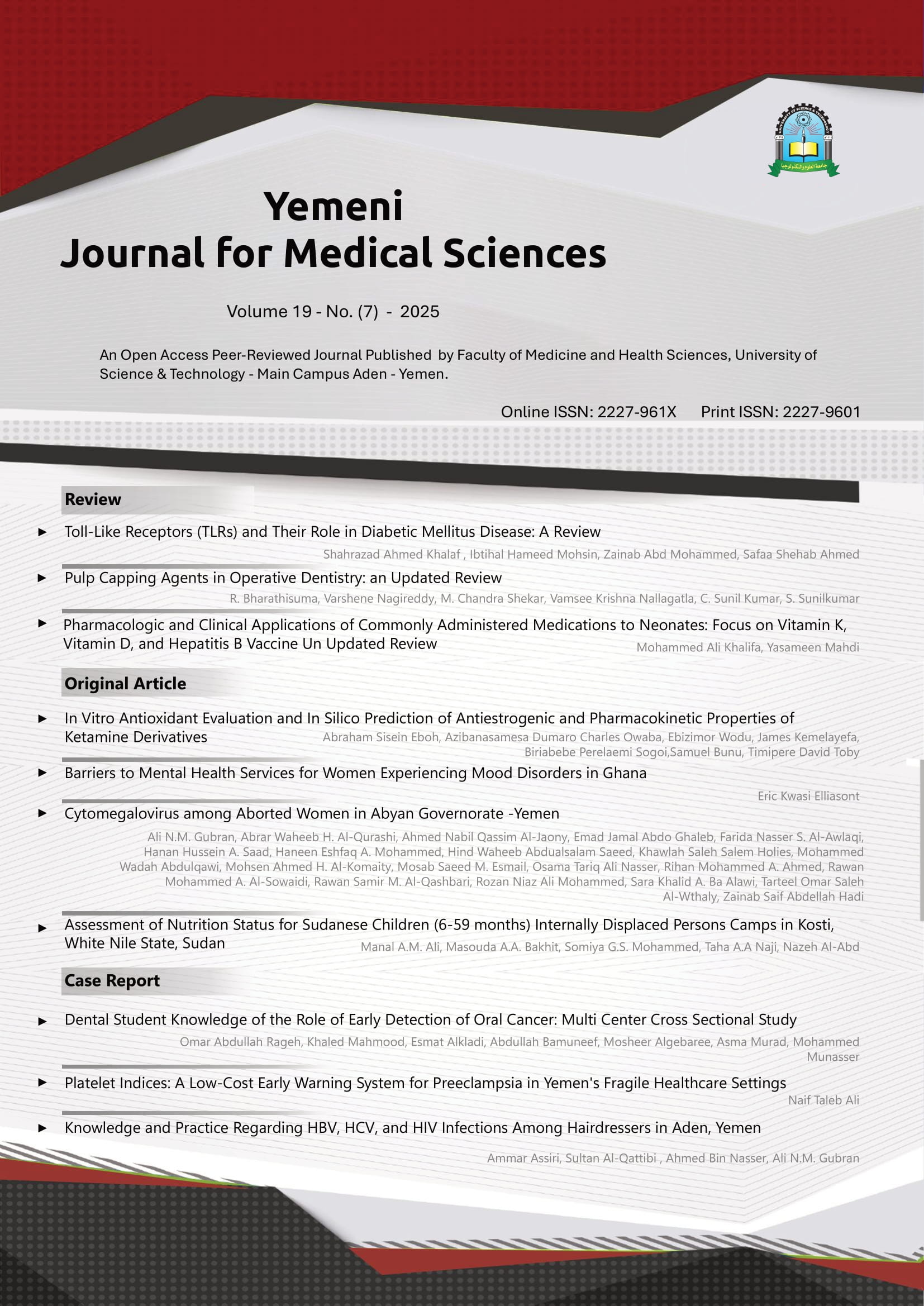In Vitro Antioxidant Evaluation and In Silico Prediction of Antiestrogenic and Pharmacokinetic Properties of Ketamine Derivatives
##plugins.themes.bootstrap3.article.main##
Abstract
Background: Breast cancer is the most prevalent cancer found among women; 12 out of 100 females are affected during their lifetime.
Objective: In vitro antioxidant and in silico methods were applied to determine the anti-breast cancer properties of the derivatives of ketamine.
Methods: Their antioxidant abilities were assessed by the following methods: ferric reducing antioxidant power (FRAP), ferrous chelating assay, 2.2-azinobis(3-ethylbenzothiazoline-6-sulfonic acid(ABTS) ABTS radical scavenging assay, and antioxidant peroxidation assay. The compounds were docked against human estrogen alpha receptor (ERα) PDB: 1SJO and cyclin D-dependent kinase 4 (CDK4) PDB: 2W96, which were always overexpressed in breast cancers. The standard drug employed during the docking process was
5-fluorouracil. The docking, drug likeness, and ADMET analysis were carried out by Maestro Suite.
Results: All tested compounds (D11-D15) showed antioxidant effects. In addition, all tested compounds exhibited stronger binding affinity than the reference compound, 5-fluorouracil. Also, the results for the docking of D11–D15 are -7.26, -7.56, -7.96, -7.77, and -7.43 kcal/mol, respectively, against 1SJ0. It also revealed that all compounds were better than the reference drug 5-fluorouracil (-4.81 kcal/mol). In the docking study of cyclin-dependent kinase 4, both the standard drug and the derivatives of ketamine are all in very close range of binding energies. All the drugs can be excreted with high safety, they do not violate Lipinski's rule of five, and their molecular weights are within the normal range.
Conclusion: Therefore, these compounds can serve as potential lead compounds in the treatment and management of breast cancers.
##plugins.themes.bootstrap3.article.details##
Ketamine derivatives, breast cancer, antioxidant assays, in silico, CDK 4 and ERα

This work is licensed under a Creative Commons Attribution 4.0 International License.
YJMS publishes Open Access articles under the Creative Commons Attribution (CC BY) license. If author(s) submit their manuscript for consideration by YJMS, they agree to have the CC BY license applied to their work, which means that it may be reused in any form provided that the author(s) and the journal are properly cited. Under this license, author(s) also preserve the right of reusing the content of their manuscript provided that they cite the YJMS.








